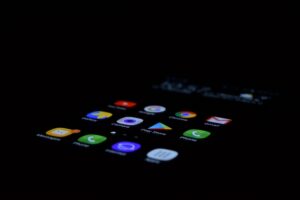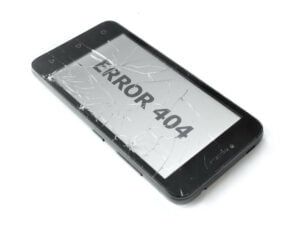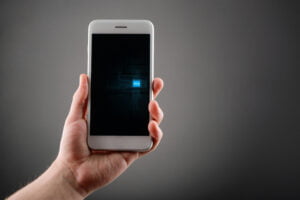In today’s fast-paced digital world, staying connected and up-to-date is essential. That’s where the background app refresh feature comes in. It allows apps on your iPhone or Android device to update their content in the background, ensuring that they are always ready and up-to-date when you open them.
With background app refresh, you don’t have to wait for apps to load or manually update them. Instead, they quietly work behind the scenes, fetching new data and refreshing their content so that you can seamlessly dive into your favorite apps without any delays. So, let’s explore how to delete an app on iPhone, this powerful feature enhances your mobile experience.
Importance of understanding and controlling background app refresh
Understanding and controlling background app refresh is crucial for optimizing device performance, improving battery life, and reducing data usage. By having a clear grasp of this feature, users can prioritize which apps should refresh in the background.
Optimizing Device Performance
Background app refresh allows apps to update their content even when they are not actively being used. While this can be convenient as it ensures that the latest information is readily available when you open an app, it can also impact device performance. Some apps may consume significant system resources during background refresh, leading to slower overall performance. By understanding how background app refresh works, users can identify resource-intensive apps and take necessary steps to optimize their device’s performance.
Improving Battery Life
One of the primary benefits of controlling background app refresh is improved battery life. When numerous apps continuously update in the background, it drains the battery faster. By selectively enabling or disabling background app refresh for specific apps, users can conserve battery power and extend their device’s usage time.
Reducing Data Usage
Background app refresh also has implications for data usage. Apps that frequently update in the background consume data even when you are not actively using them. This can lead to unexpected data overages and higher bills from your service provider. By managing which apps are allowed to perform background updates, users have control over their data consumption and can avoid unnecessary charges.
Impact on battery life and data usage
Background app refresh can have a significant impact on both your device’s battery life and data usage. Let’s take a closer look at how it affects these two crucial aspects of your smartphone experience.
Drains Your Device’s Battery Quickly
When you enable background app refresh, it allows apps to update their content even when you’re not actively using them. While this feature may be convenient for staying up-to-date with the latest information, it can quickly drain your battery power. Every time an app refreshes in the background, it consumes a portion of your device’s energy.
Consumes Data Even When Not in Use
In addition to draining your battery, background app refresh also consumes data from your cellular plan. Apps that are constantly refreshing in the background use up small amounts of data each time they update. This continuous data usage can add up over time, potentially leading to unexpected charges or exceeding your monthly data limit.
Extending Battery Life and Saving Data
To mitigate the impact on battery life and data usage, you have the option to limit or disable background app refresh altogether. By adjusting the settings on your smartphone, you can regain control over which apps are allowed to refresh in the background.
Here are some steps you can take:
- Open the Settings app on your phone.
- Look for “Background App Refresh” or similar options.
- Disable background app refresh for specific apps or turn off the feature entirely.
- Consider enabling it only for essential apps that require real-time updates.
By limiting or disabling background app refresh, you can significantly extend your device’s battery life and save precious cellular data.
Enabling Low Power Mode on iPhone and Android
Low Power Mode is an essential feature available on both iPhone and Android devices that can significantly extend your battery life. By reducing background activity, including app refresh, this mode conserves battery power by limiting unnecessary processes.
Conserves Battery Life
When you enable Low Power Mode on your device, it automatically adjusts various settings to minimize power consumption. One of the key ways it achieves this is by reducing or disabling background app refresh. This means that apps won’t constantly update their content in the background unless you open them manually.
Effective Battery Saving
By limiting background app refresh, Low Power Mode prevents apps from using up valuable battery resources when you’re not actively using them. This can be particularly beneficial when you’re running low on battery and need to make it last as long as possible.
Easy Activation
Enabling Low Power Mode is a straightforward process on both iPhone and Android devices. On an iPhone, you can access it through the Control Center or go to Settings > Battery > Low Power Mode. For Android users, simply go to Settings > Battery > Battery Saver (or similar) and toggle it on.
Other Benefits
In addition to conserving battery life by reducing background app refresh, Low Power Mode also offers other benefits such as:
- Dimming the screen brightness
- Disabling automatic downloads
- Restricting visual effects and animations
- Pausing mail fetch
- Limiting Siri functionality
These additional adjustments help further optimize your device’s performance while maximizing battery efficiency.
Disabling background app refresh on iPhone
To disable the Background App Refresh feature on your iPhone, follow these simple steps:
Open Settings and Go to General
First, open the Settings app on your iPhone. Look for the General option in the list of settings.
Select Background App Refresh
Within the General settings, scroll down until you find the Background App Refresh option. Tap on it to proceed.
Toggle Off the Switch
Once you’re in the Background App Refresh settings, you’ll see a switch next to “Background App Refresh.” By default, this switch is turned on. To disable background app refresh, simply toggle off this switch.
Disabling background app refresh prevents all apps from refreshing in the background on your iPhone. While this may save battery life and reduce data usage, it’s important to note that some apps may not function optimally without background app refresh enabled. For example, if you disable background app refresh for a weather app, it may not be able to provide you with up-to-date information unless you manually open and refresh it.
However, if you’re concerned about conserving battery or limiting data usage, disabling background app refresh can be a helpful option. It allows you to have more control over which apps are allowed to use resources in the background.
Remember that enabling or disabling background app refresh is a personal preference based on individual needs and priorities. Experiment with different settings to find what works best for you and your device.
Disabling background app refresh on Android
To disable background app refresh on your Android device, follow these simple steps:
Access Settings and Navigate to Advanced Options
- Open the Settings app on your Android device.
- Scroll down and tap on “Apps & Notifications.”
- Next, choose “Advanced options.”
Select Battery Optimization or Optimize Battery Usage
- Tap on “Special access” from the list of options.
- Look for either “Battery optimization” or “Optimize battery usage,” depending on your device.
Choose the Desired App(s)
- Tap on either “Battery optimization” or “Optimize battery usage.”
- From there, select “All apps.”
Optimize Battery Usage for Specific Apps
- Scroll through the list of apps and find the one(s) you want to disable background app refresh for.
- Once you’ve found the desired app(s), tap on it.
Disable Background App Refresh
- In the menu that appears, select either “Don’t optimize” or “Allow.” This will prevent the app from refreshing in the background.
By following these steps, you can easily disable background app refresh for specific apps on your Android device.
Turning off background app refresh on Apple Watch
To disable background app refresh on your Apple Watch and show hidden apps on iPhone, follow these simple steps.
Open the Watch app on your paired iPhone
On your iPhone, locate and open the Watch app. You can usually find it on your home screen or by using the search function.
Go to the My Watch tab
Once you have opened the Watch app, navigate to the “My Watch” tab at the bottom of the screen. This tab allows you to customize various settings for your Apple Watch.
Tap General > Background App Refresh
Within the “My Watch” tab, scroll down until you find “General.” Tap on it to access general settings for your Apple Watch. From there, locate and tap on “Background App Refresh.”
Choose either “While Using” or “Off” for each individual app
After tapping on “Background App Refresh,” you will see a list of apps that are capable of running in the background. For each individual app on your iPhone, you have two options to show hidden apps: “While Using” or “Off.”
- Selecting “While Using” allows an app to refresh data only when you actively use it.
- Choosing “Off” completely disables background app refresh for that particular app.
By following these steps, you can easily manage and control which apps are allowed to run in the background and refresh their content automatically. This can help conserve battery life and optimize performance on your Apple Watch.
Take control of your device’s background app refresh
Now that you understand the importance of understanding and controlling background app refresh, it’s time to take action. By managing this feature on your device, you can optimize battery life, reduce data usage, and ensure that only the apps you truly need are refreshing in the background.
To get started, enable Low Power Mode on your iPhone or Android device. This will automatically restrict background app refresh and other power-consuming features when your battery is running low. You can disable background app refresh for specific apps on both iPhone and Android by accessing the settings menu. On an Apple Watch, simply turn off background app refresh to conserve battery life.
By taking control of your device’s background app refresh, you’ll be able to maximize efficiency and minimize unnecessary drain on your resources. So go ahead and make these adjustments today to enjoy a smoother user experience without compromising performance.
FAQs
How does background app refresh impact my battery life?
Background app refresh can significantly impact your device’s battery life as it allows apps to update their content even when they’re not actively in use. Each time an app refreshes in the background, it consumes power from your device’s battery. By disabling or limiting this feature for non-essential apps, you can preserve precious battery life throughout the day.
Will disabling background app refresh affect my notifications?
Disabling background app refresh will not affect your notifications. You will still receive push notifications from apps; however, those apps won’t be constantly updating their content in the background unless you open them manually.
Can I choose which apps can perform background app refresh?
Yes! Both iPhone and Android devices allow you to select which apps can perform background app refresh. This way, you have full control over which applications are allowed to update their content in the background while preserving resources for essential tasks.
Does enabling Low Power Mode disable all features?
Enabling Low Power Mode doesn’t disable all features on your device. It temporarily restricts power-consuming features like background app refresh, automatic downloads, and visual effects to conserve battery life. You can still use your iPhone normally, but with optimized power usage. If you want to delete an app on your iPhone, you can follow these steps.
How often should I disable background app refresh?
The frequency of disabling background app refresh depends on your personal preferences and usage patterns. If you notice significant battery drain or data consumption from specific apps, it’s a good idea to disable their background app refresh individually. Regularly reviewing and adjusting these settings will help you maintain optimal performance.







